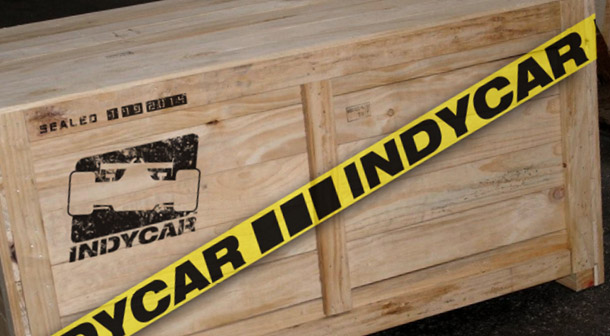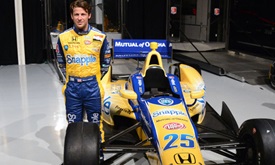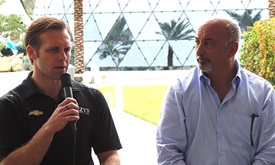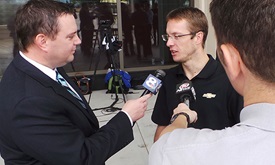Year 3 of homologation: An engine check system
JAN 29, 2014
IndyCar Series engine development director Trevor Knowles will visit Honda Performance Development in California and Ilmor Engineering (Chevrolet’s partner) in the UK in the next week to oversee the third year of engine homologation.
Basically, homologation (etymology is Greek, derived from homologeo – to agree) is granting approval or confirming the meeting of standards, and – as it refers to the series – the sealing of mandated components for the 2.2-liter, twin turbocharged, direct-injected V-6 engines.
The parts and complementary technical drawings will be used as references – a spot check system for engine manufacturer competition – during engine teardowns. The deadline for manufacturers to decide which of the new parts they want to make their spec for the year falls eight weeks before the IndyCar Series’ season-opening Firestone Grand Prix of St. Petersburg and six weeks before the Open Test at Barber Motorsports Park.
The lead time is a compromise, according to Knowles. Chevrolet and Honda teams have been on the track testing engine-related items such as throttle response rate since November, and additional manufacturer test days are scheduled in February ahead of the Open Test. Honda is transitioning from a single turbo to the twin supplied by BorgWarner as mandated by series rules for 2014.
“There is a conflicting requirement. You want to be able to develop the parts for as long as possible, so you want to push back the homologation date as late as possible,” Knowles said. “But once you know what parts you’re going to use, you have to make them all to supply the field so you want the homologation date earlier.”
The entire engine isn’t crated and placed on a shelf.
“We have a table that says what parts of the engine can be changed when, so some are fixed for the whole five years of the engine rule period, others are open for continuous development – items such as pistons and valve springs -- and others can be changed every two years,” Knowles said. “We are now starting the third year, so those things that can change every two years include camshafts, the plenum, intake ports and exhaust ports.”
The engine change-out threshold has been increased from 2,000 to 2,500 miles for the 18-race 2014 season, and four fresh engines will be allowed for the season (between the March 17-18 Open Test and the finale at Auto Club Speedway) before grid penalties are levied for unapproved engine changes.
The homologation list:
• Cylinder head: valve angles, valve center line spacing, location of intake and exhaust ports relative to the flange face, spark plug location, injector positions, camshaft and journal location, intake/exhaust port shape, combustion chamber shape, valve seat and guide.
• Induction system and plenum, including connection pipe.
• Fuel Injection.
• Turbo specification, including all inlet ducting.
• Camshaft (lift and duration).
• Connecting rod and bushing.
• Exhaust system.



















